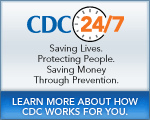Shedding, Transmission, and Stability of LAIV Viruses
Influenza Prevention and Control Recommendations
Published for the 2010-11 Influenza Season; Adapted for the 2012-13 Influenza Season
Available data indicate that both children and adults vaccinated with live-attenuated influenza vaccine (LAIV) can shed vaccine viruses after vaccination, although in lower amounts than occur typically with shedding of wild-type influenza viruses. In rare instances, shed vaccine viruses can be transmitted from vaccine recipients to unvaccinated persons. However, serious illnesses have not been reported among unvaccinated persons who have been infected inadvertently with vaccine viruses.
One study of 197 children aged 8--36 months in a child care center assessed transmissibility of vaccine viruses from 98 vaccinated children to the other 99 unvaccinated children; 80% of vaccine recipients shed one or more virus strains (mean duration: 7.6 days). One influenza type B vaccine strain isolate was recovered from a placebo recipient and was confirmed to be vaccine-type virus. The type B isolate retained the cold-adapted, temperature-sensitive, attenuated phenotype, and it possessed the same genetic sequence as a virus shed from a vaccine recipient who was in the same play group. The placebo recipient from whom the influenza type B vaccine strain was isolated had symptoms of a mild upper respiratory illness but did not experience any serious clinical events. The estimated probability of acquiring vaccine virus after close contact with a single LAIV recipient in this child care population was 1%--2%.
Studies assessing whether vaccine viruses are shed have been based on viral cultures or polymerase chain reaction (PCR) detection of vaccine viruses in nasal aspirates from persons who have received LAIV. Among 345 subjects aged 5--49 years, 30% had detectable virus in nasal secretions obtained by nasal swabbing after receiving LAIV. The duration of virus shedding and the amount of virus shed was correlated inversely with age, and maximal shedding occurred within 2 days of vaccination. Symptoms reported after vaccination, including runny nose, headache, and sore throat, did not correlate with virus shedding. Other smaller studies have reported similar findings Vaccine strain virus was detected from nasal secretions in one (2%) of 57 HIV-infected adults who received LAIV, none of 54 HIV-negative participants, and three (13%) of 23 HIV-infected children compared with seven (28%) of 25 children who were not HIV-infected. No participants in these studies had detectable virus beyond 10 days after receipt of LAIV. The possibility of person-to-person transmission of vaccine viruses was not assessed in these studies.
In clinical trials, viruses isolated from vaccine recipients have retained attenuated phenotypes. In one study, nasal and throat swab specimens were collected from 17 study participants for 2 weeks after vaccine receipt. Virus isolates were analyzed by multiple genetic techniques. All isolates retained the LAIV genotype after replication in the human host, and all retained the cold-adapted and temperature-sensitive phenotypes. A study conducted in a child care setting demonstrated that limited genetic change occurred in the LAIV strains following replication in the vaccine recipients.
Contact Us:
- Centers for Disease Control and Prevention
1600 Clifton Rd
Atlanta, GA 30333 - 800-CDC-INFO
(800-232-4636)
TTY: (888) 232-6348 - Contact CDC-INFO



